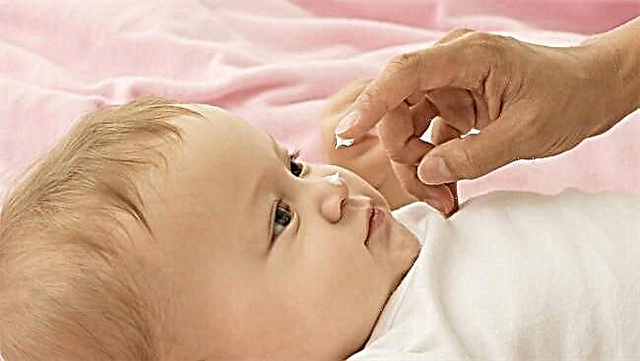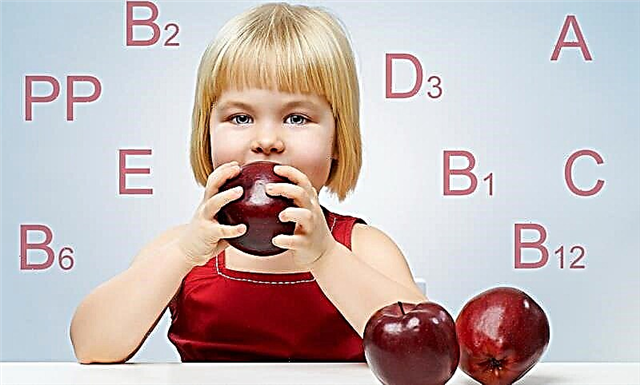The situation when a small child throws his head back and arches his back
As practice shows, in 60-70% of cases, situations in which the child throws his head back and bends do not require medical intervention, since they are completely physiological. But parents, naturally, are concerned about the causes of this symptom. This symptom is especially disturbing if at this time the baby begins to cry, becomes restless.
Does this happen in healthy babies?
Yes, and very often. It's just that some mothers closely follow the children and notice the moments when the child arches, while others, less attentive, do not. Why can a completely healthy kid do such an acrobatic trick?
The reasons for this symptom are as follows:
- physiological increased muscle tone of the flexors in children under 6 months of age. It is considered the norm, since myelination of the fibers of the pyramidal system lasts up to a year;
- an attempt to master a new skill in the form of rolling over on the tummy. In this case, the baby lies on its side and throws its head back;
- hysterics. If the usual crying did not arouse the interest of the mother, then the baby, trying to attract her attention, may bend like this;
- bloating and colic. This problem is often observed in newborns up to 3-4 months in connection with the development of microflora and peristalsis. In this case, arching is accompanied by twisting legs, screaming. To prevent such situations from arising, it is necessary during this period of the child's life while eating to give him Simethicone, which suppresses gas formation;
- comfortable sleeping position. While in the womb, children are forced to be in unnatural positions, to which they get used to during the last trimester of pregnancy, so they can unconsciously copy them;
- the child wants to examine the toys, overhead or itching in the back of his head or neck.
If, after trying to eliminate colic or calm the child, he still stands as a "bridge", then this is a reason to seek medical help in order to exclude the neurological background of this symptom.

Pathological mechanisms of behavior
Among the mechanisms of situations in which the child throws his head back, the following can be distinguished:
- the appearance of pathological impulses emanating from the foci of damaged neurons. Occurs with infantile cerebral palsy, hypoxic-ischemic encephalopathy of newborns, etc.;
- hyperdischarge actiongenerated by sites of epileptogenesis;
- stretching of nerve fibers as a result of irritation of the membranes of the brain with an increase in intracranial pressure and the influence of toxic substances (meningitis, hydrocephalus).
Increased intracranial pressure
As a result of the pathological course of pregnancy and childbirth, as well as diseases that occur in the first weeks of a baby's life, intracranial pressure may increase. This condition is very serious and requires immediate medical attention, as there is a risk of developing cerebral edema.
Symptoms of cerebrospinal fluid hypertension, in addition to throwing back the head and arching, are:
- anxiety, irritability;
- increased reaction to bright light, noise;
- unreasonable monotonous crying;
- convulsions;
- repeated regurgitation after eating;
- short periods of sleep;
- cyanosis of the nasolabial triangle;
- trembling of the tongue and lips while screaming;
- bulging of the large fontanelle and, in advanced cases, the divergence of the seams with a change in the shape of the skull;
- excessively rapid increase in head volume relative to other indicators;
- oculomotor disorders in the form of strabismus;
- loss of appetite.
An increase in intracranial pressure is often a sign of life-threatening pathologies, for example, meningitis, which in children is atypical in 45% of cases.

Child "on the bridge" with muscle hypertonia
Muscle hypertonicity is most often observed against the background of fetal hypoxia in the prenatal period or with prolonged difficult labor. The result is encephalopathy, cerebral palsy. Excessive muscle tension can be unilateral or affect both halves of the body. Up to six months of age, even doctors sometimes find it difficult to determine the mild degree of the disease.
Parents usually pay attention not only to the fact that the baby bends his back and throws his head back, but also to constant flexion (flexion) of the limbs, as well as disturbances in movement in one of them. For example, a child uses only the right or left hand to grab a toy.
Other conditions
Among other reasons for the child's head throwing back, torticollis is also distinguished. At the same time, the baby's upper body is, as it were, fixed in a certain direction, and an attempt to change the position when he lies down causes anxiety and crying. This condition requires medical intervention with a course of massage, physiotherapy. In severe cases, it is necessary to prescribe muscle relaxants, wear a special collar, and sometimes surgery.
Also, the cause of the "bridge" is often epilepsy with tonic seizures. The baby freezes for a short time, does not react to anything, and after the attack, bowel movements and urination occur.
Which specialist will help you deal with the situation?
Some parents, noticing such arching in a child, do not always know what to do with it and which specialist to turn to. First of all, you should calm down and watch the baby. Any doctor will begin to ask leading questions, without answers to which it will be difficult for him to fully imagine the clinical picture.
You should be clear about the following:
- at what point did the head tilt appear and how long does it last: from birth, a week, a month, etc.?
- Was this event preceded by a fear, a fall, an infectious disease?
- when the child bends: in a dream or during wakefulness and what is it accompanied by: cry, cyanosis of the nasolabial triangle?
- Does the baby react to external stimuli at this time?
Only after a detailed history collection and examination will the doctor be able to determine the minimum list of diagnostic measures.
If a newborn has a "bridge" symptom, then first of all, you need to visit the district pediatrician who patronizes the baby. He will be able to suspect the pathology of the nervous system, if any, and refer him to a pediatric neurologist for further examination.
What diagnostic procedures are necessary for a baby if he arches his back and throws his head back?
To understand whether tilting the head and arching the back in an infant is a physiological state or a pathology, the doctor first needs to collect complaints (they are presented by parents), a life history (during pregnancy, childbirth, early neonatal period) and disease, and conduct a detailed physical examination. If, in the course of this, signs of damage to the nervous system are detected, then the following examination methods are usually recommended:
- laboratory research (clinical analysis of blood, urine);
- neurosonography - Ultrasound diagnostics, which is carried out for children under one year old, since they still have a large fontanelle open;
- electroencephalography - to exclude epilepsy;
- CT and MRI - are used extremely rarely, despite their information content. These technologies require the use of anesthesia to immobilize a small patient.
You cannot refuse the proposed diagnostic measures, because in this case you can miss a serious illness of the nervous system.

How can I help my baby?
If, according to the results of the examination, it turns out that the child is absolutely healthy and the reasons for the arching are physiological, the parents need to: reconsider the environment in which the baby is located, treat him more carefully, preventing the development of hysterics.
Regular massage in the form of stroking and gymnastics performed by mom or dad has a good effect on the condition of newborns. Bath procedures also soothe the baby: these can be baths with lemon balm or even swimming with a special circle.
Try to arrange the toys so that the baby does not have to throw his head back and assume unnatural positions. There should be a special orthopedic pillow in the child's crib, the mobile should not be hung at the headboard, but in the center.
Conclusion
Throwing the head back in infants is not always a pathology, more often it is still a variant of the norm. But in order not to miss a disease of the nervous system, you should not forget about monthly scheduled examinations with a pediatrician. Also, if symptoms appear that alert parents, it is better not to postpone the visit to the doctor. The sooner an ailment is detected in children under one year old, the more chances are to cure it without developing complications.



